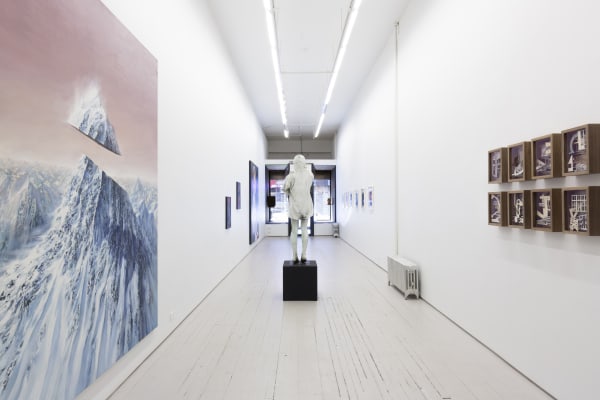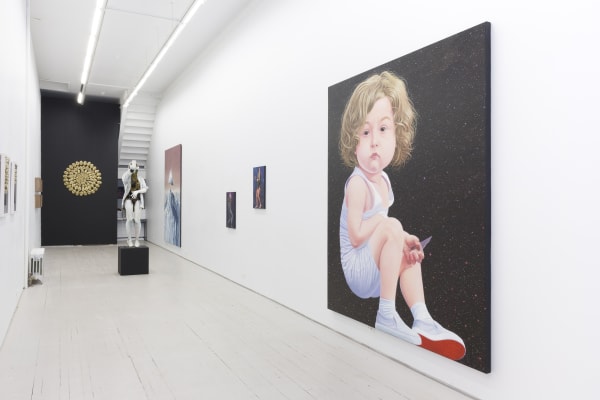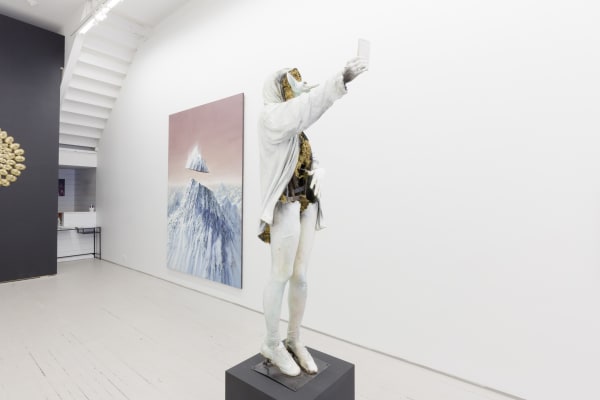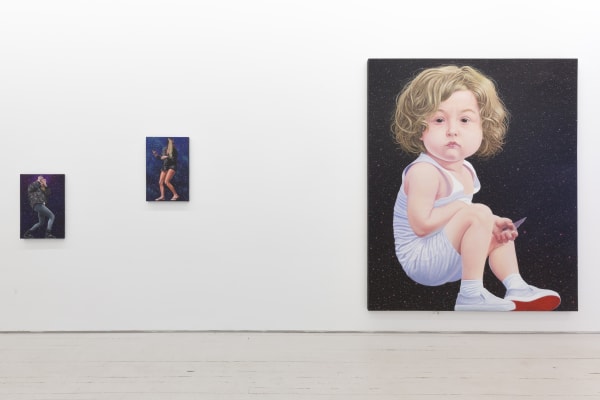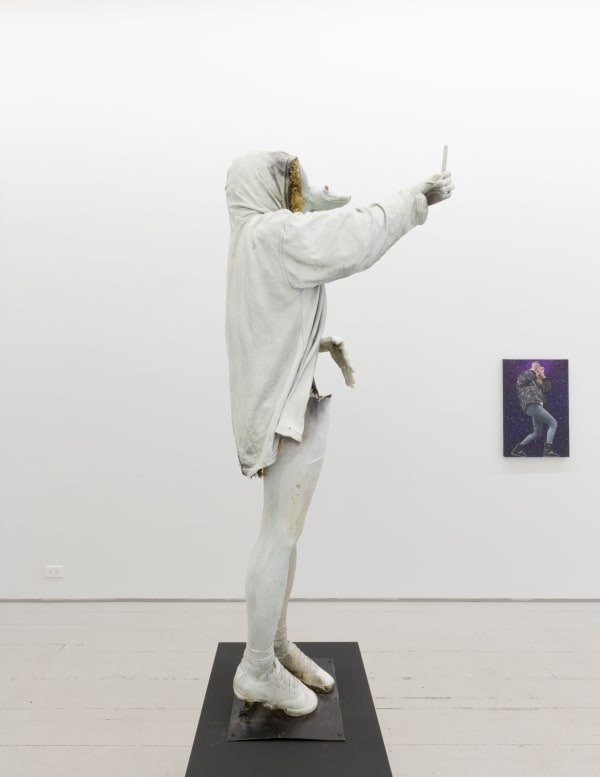Homo Deus : Curated by Anton Svyatsky
"Homo Deus" amalgamates the individual practices of the artists into a collective vision, thereby creating a comprehensive description of the precarious and precipitous landscape human civilization currently find itself in.
Mobius Gallery is pleased to announce "Homo Deus", a group exhibition curated by Anton Svyatsky, featuring 7 Eastern European artists -
CrocodilePower
Andrei Gamarț
Claudia Larcher
Bianca Mann
Lea Rasovszky
Sándor Szász
Roman Tolici
The exhibition is presented at Vacation, a gallery timeshare that hosts contemporary spaces from around the world on a rotating monthly basis, paving a new hybrid model for collaborative exhibition and exchange.
The exhibition is on view at 24A Orchard Street, New York from August 3rd to August 31st, 2018.
Taking its title from Roman Tolici's painting, and the eponymous new book by Yival Noah Harari, the exhibition exposes the overarching conceptual and aesthetic thread that the gallery program has followed since its inception. All of the artists are invariably grappling with speculative narratives concerning the future and humanity's role in it. "Homo Deus" amalgamates the individual practices of the artists into a collective vision, thereby creating a comprehensive description of the precarious and precipitous landscape human civilization currently find itself in.
Harari prompts us to consider the following conclusion-cum-dogma of modern biologists - all living beings are algorithms. Our consciousness, our free-will, our indivisible self - all a function of various algorithms inside an unbelievably complex system known as Homo sapiens. None of the aforementioned things exist as independent entities. Our consciousness, and even our "self" are illusions, system artifacts of an algorithm that processes data. Consider also that an algorithm with no consciousness is able to perform most, if not all tasks better than an algorithm with consciousness. Consciousness is not necessary for intelligence to have value, but not vice versa; we are conditioned to believe that only intelligence gives value to consciousness. Finally, consider what happens when non-conscious but impossibly intelligent algorithms have penetrated every segment of society, every market and every decision-making process - an omniscient network that knows you better than you know yourself. Would life as we know it retain any meaning?
The zeitgeist of possible futures has engulfed the imagination of people all over the world. We are witnessing the rise of algorithms; algorithms that determine the future with increasing accuracy, algorithms that can prevent the outbreak of disease by monitoring your emails, algorithms that determine what you should buy, where you should go, and whom you should meet. It's a time where humanist values are subverted by evermore intelligent machines in the pursuit of the contemporary apotheosis of happiness, which, according to Harari, is eternal life, eternal bliss, and unlimited power - the purview of tech billionaires of Silicon Valley. Homo deus is what the select privileged number of Homo sapiens living in a mythical land are striving to become in yet another attempt to ascend Olympus. If successful, Homo deus threatens to do to Homo sapiens what Homo sapiens did to the Neanderthals.
This exhibition echoes the concerns within the book, but it does so through the various artistic practices that each act as a magnifying glass applied to various key ideas. In distilling an idea into visual form, artists are able to amplify meaning and touch substance that is inaccessible when presented as abstract thought. Seven artists reflect on humanity's collective anxiety about the future. Seven threads weave together into a complex tapestry of speculative ideas, fears, and echoes.
In his signature style combining hyperrealism with an eerie sense of inexplicable otherness, Tolici's unique ability to induce discomfort by giving form to ephemeral substance metastases into "Homo Deus". By the title of Tolici's painting we can infer that the infant, confronting the viewer with his perfectly large, brown eyes and adorable curly hair, is so not by chance, but by design. He is more intelligent than you. He will live longer than you. He will be more powerful than you can imagine. His presence is palpable and inexplicably threatening.
At first glance, CrocodilePower's mixed-media sculpture "The Catcher" is a critique of the ubiquitous contemporary vice of selfie-making. But when regarded through the prism of contemporary technology, we are forced to consider also the phone as an agent, with powerful algorithms making billions of calculations that are presumably meant to serve our needs, but instead serve as a measure of our intellectual inferiority by comparison. The critter-like animal emerging from the hood of the figure is a reflection in the piece of technology that acts as a distorting mirror. With the wave of a magic wand, we are no longer the superior species we believe we are.
Lea Razovsky's whimsical mixed-media dioramas "Mr. Vio" and "Father of Man" are metaphors for interdependence, functioning as exemplification, justification, and existing as byproducts of a specific set of values that the technological revolution will invariably disenfranchise. Similarly, Bianca Mann's many-faced sculpture represents a search for the self in a cacophony of identities, a societal struggle that intensifies with the acceleration of information exchange.
Oscillating between the states of projection and recollection, Andrei Gamarț's subjects act as an ideal metaphor for futuristic speculative ideas. In "Escape Room with a Painting II", an imposing snowy mountain's peak is cut as if by a precision laser, bending nature to the will either of imagination or technology - a pertinent juxtaposition of two things that futurists prophesize will become indistinguishable.
In the post-humanist world of Sándor Szász's collages, people straddle spasmodic, post-apocalyptic, futuristic landscapes in an endless and futile search for meaning. Using cutouts from multitudinous sources to reference forms of urbanism, technology, and science, Szasz gives them an ominous sense of agency in their environment. Juxtaposed with fragile bodies in oftentimes perilous situations, the collages serve to highlight humanity's struggle. In stark contrast, Claudia Larcher's paper collages of the "Baumeister Series" plumb the depths of urban algorithms, devoid of any human presence. Through the forms of urbanism, her exquisite compositions raise the specters of looming social issues, products of rapid technological advancement that first led human civilization to abandon nature and might eventually render humanity irrelevant altogether.
In the next few decades, the striving of a minuscule elite will fundamentally change the whole of human society, for better or worse. The sacred fictions that inform our values will be confronted by a new social paradigm that makes them irrelevant. The freedoms and rights we take for granted will be severely tested. We, as a collective, will have to yet again reinterpret the meaning of life. The future has overthrown the past in informing the present, and humanity must adjust to the new regime.
(Anton Svyatsky, curator)



